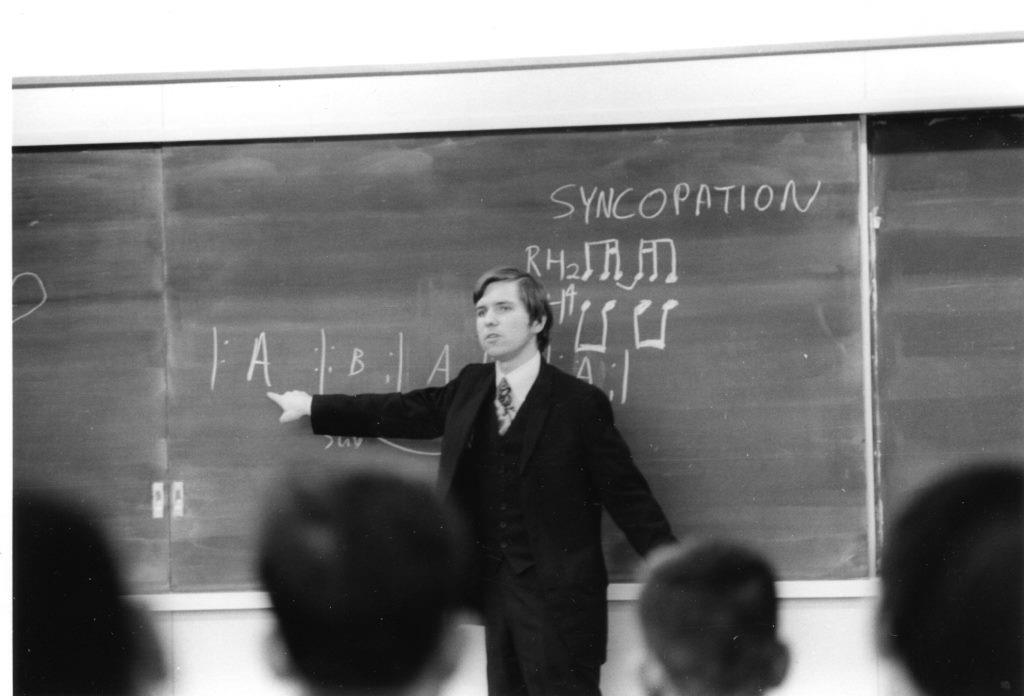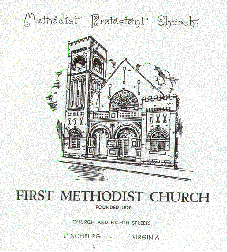The books and articles of James Siddons are in the areas of music, ethnomusicology, music in Japan, Virginia history, and church ministry. Please scroll through the catalogue below to find titles on these topics. Click here to return home.
Musicology and Ethnomusicology
“Spiritual Aspects of the Music of Tōru Takemitsu,” research paper read at the Film and Music Festival “Takemitsu and Corigliano” University of Arizona School of Music, Tucson, Arizona, October 23, 2010.
Essays on composers Tōru Takemitsu and Anton Webern in Larry Sitsky, editor, Music of the Twentieth-Century Avant-Garde: A Biocritical Sourcebook. Westport, Connecticut, and London: Greenwood Press, 2002, pages 508-524 and 548-553.
Tōru Takemitsu: A Bio-Bibliography in Music. Bio-Bibliographies in Music Number 85. Westport, Connecticut, and London: Greenwood Press, 2001. “The Takemitsu bio-bibliography of James Siddons is a marvelously thorough and wonderfully organized work … imaginative and highly useful … a must for any music library; all students of either twentieth-century Japan or Japanese music are deeply indebted to the author.” –Steven Nuss, review in Notes: Journal of the Music Library Association, September 2002, pages 59- 60.
 James Siddons with Tōru Takemitsu, Suntory Hall, Tokyo, March 1990.
James Siddons with Tōru Takemitsu, Suntory Hall, Tokyo, March 1990.
Articles on Japanese composers Kōmei Abe and Yasushi Akutagawa for Die Musik in Geschichte und Gegenwart, 2nd edition. Personenteil Vol 1. Kassel, Germany: Bärenreiter, 1994. The leading German music encyclopedia, in 21 volumes.
“Some Definitions of ‘Orchestra’,” Asian Culture Quarterly XVIII (1990), pages 58-60. Published in Taiwan. The European concept of “orchestra” is compared to instrumental ensembles in East Asia, such as Japanese gagaku (雅楽) and the Hong Kong Chinese Orchestra.
Chair of the “Reception of European Music in Japan” session of the Fourth Symposium of the International Musicological Society (SIMS 1990), Osaka, Japan, July 22-25, 1990.
Anthony Milner: A Bio-Bibliography in Music. Bio-Bibliographies in Music Number 20. Westport, Connecticut, and London: Greenwood Press, 1989. “…James Siddons has fleshed out his volume with details on the composer and his works, including almost every known performance and radio broadcast…, allowing the reader a sense of the composer’s musical development.” –John R. Douglas, Notes: Journal of the Music Library Association, March 1991, page 763.
 To hear a radio interview of James Siddons on his bio-bibliography (4 mins), click here.
To hear a radio interview of James Siddons on his bio-bibliography (4 mins), click here.
“Joseph Goddard and Curt Sachs on 'The Rise of Music’,” research paper read at the congress Musica Antiqua Europae Orientalis, Bydgoszcz, Poland, September 5-10, 1988. Published in the congress report, Acta Musicologica Supplementum, 1988, pages 73-83.
“The Musical Style and Achievements of British Composer Anthony Milner,” research paper read before the Southeast Chapter of the American Musicological Society, meeting at the Duke University Music School, Durham, North Carolina, March 19, 1988.
“Current Research in Asian Music and Its Implications for Teaching Music in General Education Courses,” paper read at the Virginia Music Educators Association In-Service Conference, Roanoke, Virginia, November 22, 1986.
“Music of the Silk Road,” paper read at a combined meeting of the Mid-Atlantic Chapter of the College Music Society and the Southeast Chapter of the American Musicological Society, Salem College, Winston-Salem, North Carolina, April 5, 1986.
“Fumio Koizumi of Japan: An Asian’s Use of the Concepts of Melody Found in the Works of Abraham Z. Idelsohn, Robert Lachmann, and Curt Sachs,” Musica Judaica IX (1986-87), pages 35-46.
“On the Nature of Melody in Varèse’s Density 21.5,” Perspectives of New Music 23 (1984), pages 298-316.
“Libraries §V: Africa, Asia and Australasia – Japan,” The New Grove Dictionary of Music and Musicians. London: Macmillan, 1980, Vol. 10, pages 820-821. Reprinted with editorial emendations in The New Grove Dictionary of Music and Musicians, 2nd edition. London: Macmillan, 2001, Vol. 28, pages 333-335.
Japan Section of the Directory of Music Research Libraries. Kassel, Germany: Bärenreiter, 1979. RISM (Répertoire internationale des sources musicales) Series C, Vol. IV, pages 61-160. Supplement published in Fontes Artis Musicae (1986). Based on research in Japan 1972-74. “The Japanese section [of the Directory] is the most remarkable illustration of the total approach. The entry on Kyoto, library of Tōji, for example, tells of a collection of a secret society for Esoteric Buddhism. … In 1957, its secrecy was broken when a group of Japanese experts was allowed to inspect the collection. … 6,000 items were rated National Treasures or Important Cultural Properties. Some scrolls relating to Buddhist music have also been found. This brief but colorful description conveys the essence of the place, as well as its quantifiable contents.” –Harold J. Diamond, Notes: Journal of the Music Library Association, March 1980, p. 661.
"A Librarian's Guide to Musical Japan," Fontis artis musicae 24, No. 2 (1977), pp. 59-68. A brief history of music collections (Buddhist chant, court music, noh plays) in Japan since the 10th century, and a survey of libraries in mid-20th century Japan.
“A Historical Survey of Music Collections in Japan,” read at a meeting of the Texas Chapter of the Music Library Association, University of Houston, Houston, Texas, April 10, 1976 (morning).
Panel member of a symposium on musicianship held as part of a meeting of the Southwest Chapter of the American Musicological Society, University of North Texas, Denton, Texas, April 10, 1976. I read a short paper that compared musical life in England and Japan in the 17th century. (A Houston-to-Dallas midday flight made participation in this afternoon meeting possible.)
“Noro (Female shaman) Chant of Okinawa,” research paper based on ethnomusicological fieldwork in Okinawa with Prof. Fumio Koizumi’s seminar at Tokyo University of Arts, read at a meeting of the Southwest Chapter of the American Musicological Society, University of Texas, Austin, Texas, October 18, 1975. Translation of the Okinawan dialect of Japanese in the field recordings was guided by Prof. Gene J. Cho of the University of North Texas.

Lecture-Recital of Ragtime Music for Solo Piano, presented to the English-Speaking Society of Sakai City, Japan, February 2, 1973. To see a short video based on this lecture-recital, click here.
“The Formal and Harmonic Development of Scott Joplin,” paper read at a meeting of the Southwest Chapter of the American Musicological Society, Texas Christian University, Fort Worth, Texas, April 22, 1972. To see a video (20 mins) based on this lecture, click here.
Invited participant in the Symposium of New Music and Its Criticism, held as part of the Gaudeamus Foundation Music Week, Rotterdam, The Netherlands, September 8-9, 1970.
Theology and Church Ministry
“The Musical Nature of the Psalms,” lecture given at Wesley Theological Seminary, Washington, D.C., November 15, 2001. A chapel service the same day included music composed by James Siddons.
“Theological Aspects of the Music and Thought of Arnold Schoenberg,” lecture given at Duke University Divinity School, Durham, North Carolina, December 6, 1996. To hear this lecture with illustrations (37 mins), click here.
“Organs and Organ Music in Japan,” lecture with musical examples and photographs from Japan for the Lynchburg, Virginia, chapter of the American Guild of Organists, given March 24, 1991.
“Hymns, Hems, and More Hims: A Patchwork History of Church Song,” educational program presented in the sanctuary of Fort Hill United Methodist Church, Lynchburg, Virginia, September 13, 1987. Musical examples were sung by the church choir, and by the audience as congregational hymns.
Virginia History
The Spirit of New London Academy: The Two-Hundred Year History of a Virginia Educational Landmark. Bowie, Maryland: Heritage Books, 1994. Commissioned by the Board of Managers of the Academy for the school’s bicentenary in 1995. New London Academy was founded as a school for boys, then was absorbed into the public school system of Bedford County, Virginia, in the 1870s while also accepting students from Campbell County. A grandson of Thomas Jefferson attended. “In fact, this book is really an example of the history of public education in America. For genealogists it is priceless. … This book is a ‘must’ for those with Virginia heritage.” –Jan Davis, Indian River Genealogical Society Newsletter, February 1995, page 4. “… author James Siddons, who recently completed a 600-page history of New London Academy, says … it crossed the paths of such people as Thomas Jefferson.” --Richard Foster, Roanoke Times & World-News, June 16, 1994, pages C5-C6.
 New London Academy in 1888.
New London Academy in 1888.
To hear a radio interview of James Siddons about his history of New London Academy, click here.
 Methodist Protestant Church, 828 Church Street, Lynchburg, Virginia, facade of 1898.
Methodist Protestant Church, 828 Church Street, Lynchburg, Virginia, facade of 1898.
A History of the First United Methodist Church of Lynchburg, Virginia, 1828-1988, with Genealogical Index and Description of the Church Archives. Bowie, Maryland: Heritage Books, 1992. “Dr. Siddons has extracted the historical record of this church from its archives (now placed in the Jones Memorial Library in Lynchburg) quoting extensively from the records and adding appropriate notes for clarity.” –The Virginia Genealogist 1992-93, page 312. “… a very readable history of the church and the old Lynchburg College, a unit of the Methodist Protestant educational system.”—The Virginia Genealogical Society Newsletter, Vol. XIX, No. 1, page 9.
